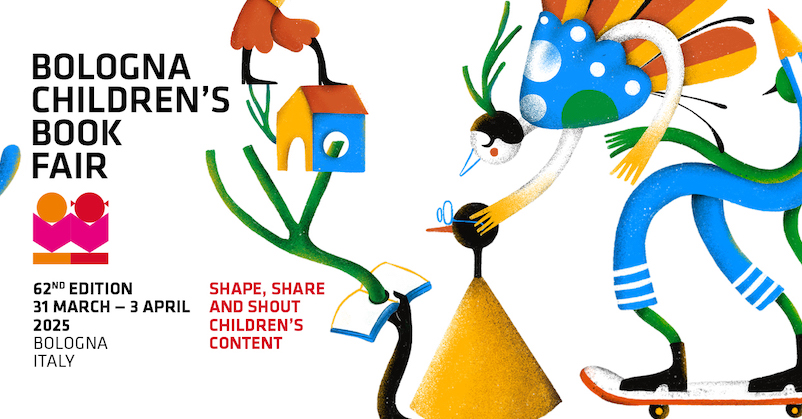“Few passions are constant, but many are sincere”. The maxim is by the Marquis de Vauvenargues, one-time proprietor of the Provençal chateau where Pablo Picasso and his second wife, Jacqueline Roque, lived between 1959 and 1961, and where they are buried. Speaking to his first wife, Olga Khokhlova, the artist’s mother was blunter on the vagaries of love: “I don’t believe any woman would be happy with my son. He’s available for himself but no-one else.” Deriding Picasso is fashionable; the critic Eliza Goodpasture spoke for many when she claimed that the “lurid radicality of his art rests on a wanton disregard for the humanity of the women he painted and slept with”. Sue Roe’s group biography of his six most significant partners does not seek to defend him. Instead it gracefully assembles the facts surrounding their shared experience of being loved by a genius.
Fernande Olivier was twenty-three in 1904, when she met Picasso at the Bateau Lavoir, the fabled studio in Montmartre where she had established herself as an artist’s model. She had fled a forced and abusive marriage for Paris, where, as she recorded in her journal: “I feel as though I’m beginning my real life”. She adored the rackety glamour, with material inconveniences – the Bateau Lavoir had one cold tap for its twelve occupants and such minimal heating that in winter tea froze in the cup – mitigated by independence and the intoxicating sense of being at the centre of the artistic world. After she moved in with Picasso in 1905, Olivier found herself chatting with Gertrude Stein as she sat for her portrait, and borrowing books from Guillaume Apollinaire. According to Stein’s partner, Alice B. Toklas, Olivier had only three topics of conversation – hats, perfumes and furs – but her stately beauty clearly captivated Picasso, and Roe argues persuasively that her image formed an important part of his Rose Period.
Although she drew and painted, Fernande’s focus was on Picasso the man; his revolutionary “Les Demoiselles d’Avignon” does not merit a mention in her journal for 1907. Only after the relationship ended in 1912 did she fully apprehend the financial potential of his celebrity, selling a serial to Le Soir, publishing a book and threatening another of “intimate memories”, the publication of which Picasso paid her a million francs to suppress in 1956.
Picasso may have been famous by the time he met Khokhlova in Rome in 1917, but he was a newcomer to her world. An exceptional dancer who had been selected personally by Vaslav Nijinsky for the Ballets Russes aged nineteen, she had performed in Sergei Diaghilev’sFirebird and Scheherazade, while Picasso had no experience in ballet. Nor, as yet, did he mix in the grandest society in Europe, whose members the Ballets Russes attracted. Khokhlova’s milieu, as Roe observes, represented an opportunity for him, and initially at least theirs was a dynamic partnership of creative equals. She also suggests that “Portrait of Olga in an Armchair” (1918) was a celebration of their engagement, which misses a darker resonance of the picture. Picasso worked from a photograph in which her feet and shoes are visible: in the painting, they are cropped out. Khokhlova was forced by an injury to abandon the ballet just before their wedding; while the omission of the means of her art may have been tactful, it could well represent a statement about their crippled future.
Coping with the loss of both her career and her family, dispersed and impoverished by the Russian Revolution, Khokhlova showed extraordinary fortitude as a shrewd, capable hostess who managed the ferocious social life that promoted her husband’s career. In 1921, she gave birth to a son, Paulo, but was subsequently plagued with severe gynaecological problems. In 1929, she discovered that Picasso had been involved in an affair with Marie-Thérèse Walter – “Grand Nu au fauteuil rouge”, painted that year, achieves much of its macabre power through the contrast of an orderly domestic interior with the writhing, agonized figure of the painter’s wife. Here Roe draws a skilful comparison with the sensual tranquillity of “Nude Woman in a Red Armchair” (1932), representing Walter. Entirely different in tone and technique, these two pictures can be “biographized” according to their subjects – the wife in ectoplasmic torment and the mistress all voluptuous delight – but Roe insists that they are “primarily about paint, and experimentation in paint”.
The author’s discussion of Picasso’s work is insightful and original, but it is the lives beyond the canvas that principally concern her. With the appearance of Walter, the pace and complexity of those lives accelerated. Seventeen to Picasso’s forty-five when she bumped into him at the Galeries Lafayette department store in Paris in 1927, she was stunning, sporty and so entirely uninterested in art that his chat-up line – “I am Picasso” – made no impression. Nonetheless, they soon began a relationship that lasted for two decades.
Roe notes a pattern in the artist’s relationships: he fell instantly and wildly in love approximately once a decade, followed by a lengthy overlap before he moved on with the newer woman. Walter spent years shadowing Picasso and Khokhlova, lurking in lodgings in Normandy or the Côte d’Azur while they holidayed nearby, moving in when Khokhlova was away. The time she spent modelling in his Paris studio produced a “flood of brilliant new work”, included among the 225 canvases shown at his retrospective in 1932, but their affair remained discreet until her pregnancy in 1934 prompted Picasso to seek a legal separation from Khokhlova.
By 1936, Picasso was involved with the photographer Dora Maar, and it was Walter’s turn to be parked in the country with her child for weekend visits while Picasso painted and played in Paris. Like Khokhlova, Dora was a serious artist – her “Portrait d’Ubu” (1936) is considered one of the seminal works of the surrealist movement. She set her cap at Picasso with an appropriate stunt, appearing alone at the Deux Magots café in a pair of black gloves embroidered with rosebuds. After removing the gloves, she set to cutting her fingers with a penknife, comparing the effect, and Picasso was entranced. The only artist besides Georges Braque with whom Picasso seriously collaborated, Maar taught him the technique of etching on glass and documented the process of the creation of “Guernica”.
The outbreak of war and the occupation of Paris didn’t slow Picasso down. A much-recounted fist fight between Walter and Maar took place between 1942 and 1944, while in 1943, Picasso strode across a restaurant to offer a bowl of black-market cherries to an enchanting girl named Françoise Gilot. He was involved with all three women in 1946. Olivier, too, made a ghostly comeback when Picasso insisted on dragging Gilot back to his old Montmartre haunts. Khokhlova also reappeared, trailing Gilot on the beaches of the Côte d’Azur, and on one occasion stabbing her in the hand with her high-heeled shoe.
From the sitter for “Grand Nu”, it was a charged gesture. Gilot was a committed and talented painter who had an exclusive contract with Picasso’s dealer, Daniel-Henry Kahnweiler, and a solo show in Paris in 1952, but when she left Picasso the next year, he had the contract terminated and removed all her drawings from their home. It took Gilot many years to rebuild her career, but she continued painting until her death at the age of 101, and Roe writes elegantly about the energetic, haunting abstracts of her later practice. In 2021, her portrait of her daughter by Picasso, “Paloma à la Guitare”, achieved $1.3 million at the first Sotheby’s sale devoted entirely to women artists.
Jacqueline Roque met Picasso in Vallauris during the turmoil of his separation from Gilot. She proved a conciliatory influence, inviting all his “joyous horde” of children to stay at gatherings that included Jean Cocteau, the local baker, President Truman and Brigitte Bardot. Picasso was fascinated by her combination of intellectualism and simplicity – when they married in 1961, she cooked their wedding breakfast (duck and turnips), and as Picasso entered the frenetic last phase of his working life, she converted an umbrella stand into a dining table to accommodate the endless stream of pictures. Her protectiveness of her elderly husband and his need for seclusion saw her unfairly branded as a tyrannical gatekeeper – Roe notes that she was the “most maligned” of his partners.
The last section of Hidden Portraits is perhaps the best argument against the accusations of misogyny that now dog Picasso’s reputation. In his final years, he worked like a possessed alchemist, desperate to extract the quintessence of his subjects, returning obsessively to the female form in an attempt to render it in a fashion which would “contain everything about a particular woman and yet would not look like anything known about her”. Sue Roe does not neglect the emotional catastrophes he wrought – both Walter and Roque took their own lives after his death; Maar suffered a nervous collapse after they separated – yet to see these six women as victims is dismissive and reductive. Deftly, discreetly and convincingly, this book dismantles the myth of Picasso the monster.
Lisa Hilton’s latest book is The Scandal of the Century, 2024
The post Raging bull appeared first on TLS.

 By Times Literary Supplement | Created at 2025-04-02 12:32:31 | Updated at 2025-04-04 05:10:58
1 day ago
By Times Literary Supplement | Created at 2025-04-02 12:32:31 | Updated at 2025-04-04 05:10:58
1 day ago







